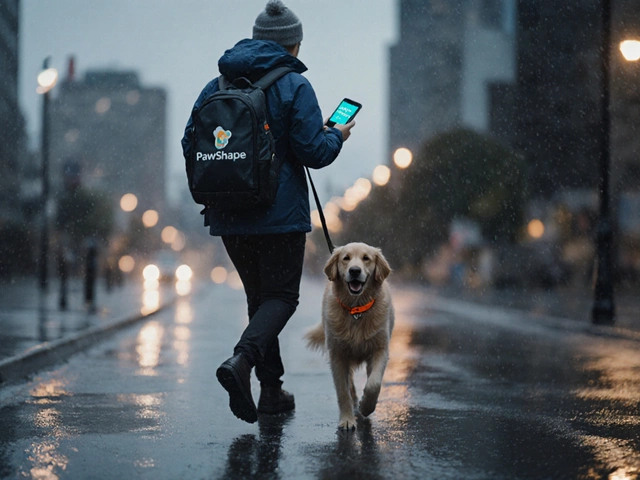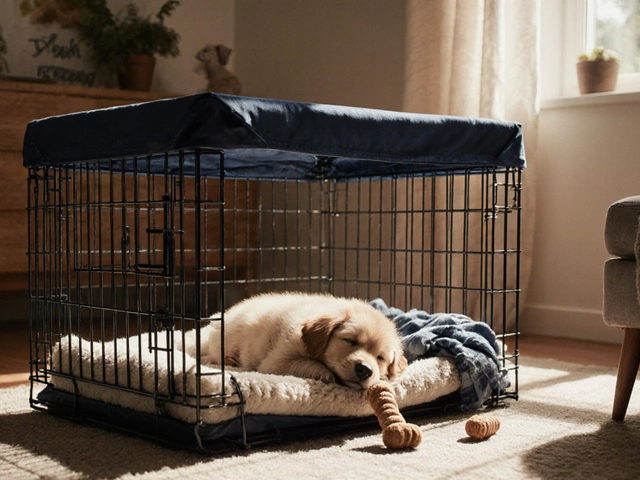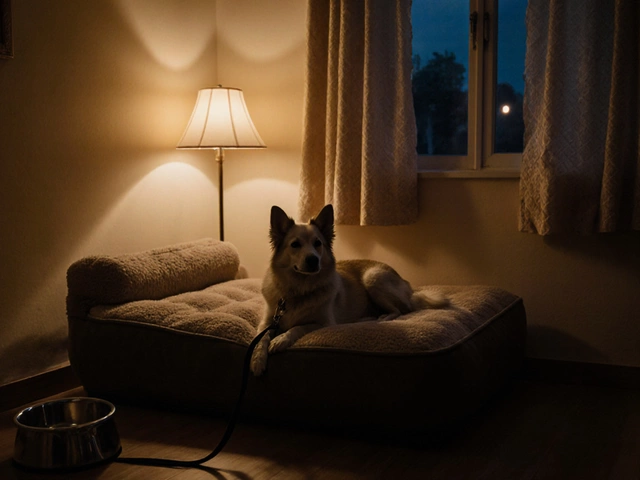
Dog Ownership Feasibility Checker
Your Results
Balancing a full‑time job and a happy, healthy dog can feel like a juggling act, but it’s far from impossible. Below you’ll find a step‑by‑step guide that helps you decide if a dog fits your 9‑5 lifestyle, what breeds work best, and how to set up daily support so both you and your pup thrive.
Key Takeaways
- Dogs can thrive with owners who work 9‑5 if you plan routine, use reliable care options, and pick a suitable breed.
- Morning walks, midday breaks, and evening playtime are the three pillars of a happy schedule.
- Professional services - dog walkers, pet daycare, or a dog‑friendly office - bridge the gap when you’re at work.
- Consider flexibility: remote days, staggered shifts, or a shared‑care agreement with a roommate.
- Invest in pet insurance and a backup plan for unexpected emergencies.
Dog is a domesticated canine companion that needs regular exercise, mental stimulation, and social interaction. Whether you’re a city dweller or a suburban commuter, the species’ social nature means it will look to you for structure and affection throughout the day.
Full‑time job refers to an employment arrangement that typically requires 35‑40 hours per week, often from 9a.m. to 5p.m. on weekdays. The routine creates predictable windows for pet care but also demands reliable support when you’re away.
1. Does Your Schedule Really Allow a Dog?
Start by mapping a typical weekday hour‑by‑hour. Identify when you can:
- Take your dog out for a quick bathroom break before work.
- Fit a brief mid‑day walk or a check‑in (many offices have nearby parks).
- Spend quality time after you get home - at least 30‑45 minutes of play or a walk.
If those slots add up to at least an hour of active time, most healthy adult dogs can manage. Puppies and high‑energy breeds need more frequent outings, so weigh that against your flexibility.
2. Choosing the Right Breed for a 9‑5 Lifestyle
Breed temperament, size, and exercise needs dictate how well a dog fits a standard workday. Below is a quick guide to breeds that typically adapt well:
- Low‑energy: French Bulldog, English Bulldog, Cavalier King Charles Spaniel.
- Medium‑energy: Labrador Retriever (if you can provide a morning jog), Basset Hound, Greyhound.
- High‑energy - usually better for flexible schedules: Border Collie, Australian Shepherd, Jack Russell Terrier.
Remember, individual personality often outweighs breed stereotypes, so spend time meeting a dog before adoption.

3. Support Options When You’re at Work
Even the most adaptable dog can get anxious if left alone for too long. Here are the five most common ways to keep your pup comfortable:
| Option | Cost (monthly) | Flexibility | Social Interaction | Best For |
|---|---|---|---|---|
| Dog walker | $150‑$300 | High - walks can be scheduled at any time | Medium - one‑on‑one walk | Medium‑energy dogs, owners with rigid office hours |
| Pet daycare | $250‑$500 | Low - needs full‑day enrollment | High - group play, supervision | High‑energy puppies, social dogs |
| Remote work (flexible schedule) | Varies - often no extra cost | Highest - you’re home | High - constant companionship | All breeds, especially high‑energy |
| Dog‑friendly office | Free to low (if office provides pet‑policy) | Medium - depends on office culture | Medium - limited to office hours | Calm, well‑trained dogs |
| Family or roommate share | Shared expenses, usually low | Medium - coverage when one is at work | High - multiple caregivers | Any breed, especially when budget‑tight |
4. Setting Up a Dog‑Proof Home for Long Hours
When you’re gone, your home should be safe and engaging. Consider these tweaks:
- Secure cords and toxic plants.
- Provide a comfortable, draft‑free sleeping area.
- Leave chew‑safe toys that dispense treats - they keep the mind occupied.
- Use a timed feeder if you can’t be home for meals.
Small comforts go a long way in reducing separation anxiety.
5. Weekend & Holiday Planning
Even the best daily routine needs a backup plan for vacations or overtime weeks.
- Pet sitters: Look for certified sitters with references.
- Friends/family: Offer a swap - you watch their cat, they watch your dog.
- Extended daycare: Many facilities offer weekend packages.
Always run a short trial before a long trip; it lets your dog get used to the new caretaker.
6. Financial & Legal Considerations
Owning a dog adds regular expenses: food, grooming, vet visits, and emergency care. A solid Pet insurance plan can offset surprise surgery costs. Compare policies based on:
- Coverage limits (annual, per‑incident).
- Exclusions (pre‑existing conditions).
- Deductible amounts.
If your workplace offers a pet‑care stipend, factor that in when budgeting.

7. Training Basics for the Working Owner
Good manners reduce stress for both you and the caregiver. Focus on:
- Crate training: Makes travel, vet visits, and daycare smoother.
- Loose‑leash walking: Keeps midday walks pleasant.
- Alone‑time tolerance: Start with five‑minute absences, gradually increase.
Enroll in a local obedience class or use a reputable online program if time is tight.
8. Real‑World Success Stories
Tom, a software engineer in Seattle, works a strict 9‑5 but adopted a Greyhound named Luna. He hired a morning dog walker for a 30‑minute stroll and enrolled Luna in a weekday daycare that offers a “quiet hour” for low‑energy dogs. On remote Fridays, Tom works from home, giving Luna extra playtime. The arrangement costs him about $350 a month, which he offsets with his company’s pet‑care reimbursement.
Maria, a marketing manager in Austin, switched to a hybrid schedule (two days at the office, three days remote). She chose a French Bulldog because of its low exercise demand. On office days, she brings the dog to a pet‑friendly co‑working space, saving on daycare. Her total monthly spend is under $200, and she reports higher job satisfaction.
Bottom Line
Yes, you can have a dog while working a 9‑5 job. The trick is matching the dog’s needs with the right blend of personal time, professional support, and smart budgeting. By planning mornings, evenings, and backup care, you’ll give your canine companion a stable, love‑filled life without compromising your career.
Frequently Asked Questions
Can a puppy survive while I work 9‑5?
Puppies need frequent bathroom breaks and socialization, so a pure 9‑5 schedule is challenging. Pair a puppy with a dog walker for morning and afternoon check‑ins, and consider a half‑day daycare to cover the middle of the day.
Is it cheaper to hire a dog walker or use pet daycare?
Cost varies by city. In most U.S. metros, a dog walker costs $15‑$30 per walk, totaling $150‑$300 a month. Daycare ranges $250‑$500. If your dog is high‑energy, daycare may provide more mental stimulation, making the higher price worthwhile.
Can I bring my dog to the office?
Only if your employer has a pet‑friendly policy and the office space permits it. Even then, ensure the dog is fully house‑trained, leashed when moving around, and comfortable around strangers.
How much exercise does a typical 9‑5 dog need?
Most adult dogs need 30‑60 minutes of active exercise daily. Split it into a 15‑minute morning walk, a midday stroll (or a walker’s visit), and an evening play session.
What should I look for in a dog‑care provider?
Check licensing, emergency protocols, staff‑to‑dog ratios, and reviews. Visit the facility, ask about vaccination requirements, and see how they handle separation anxiety.





